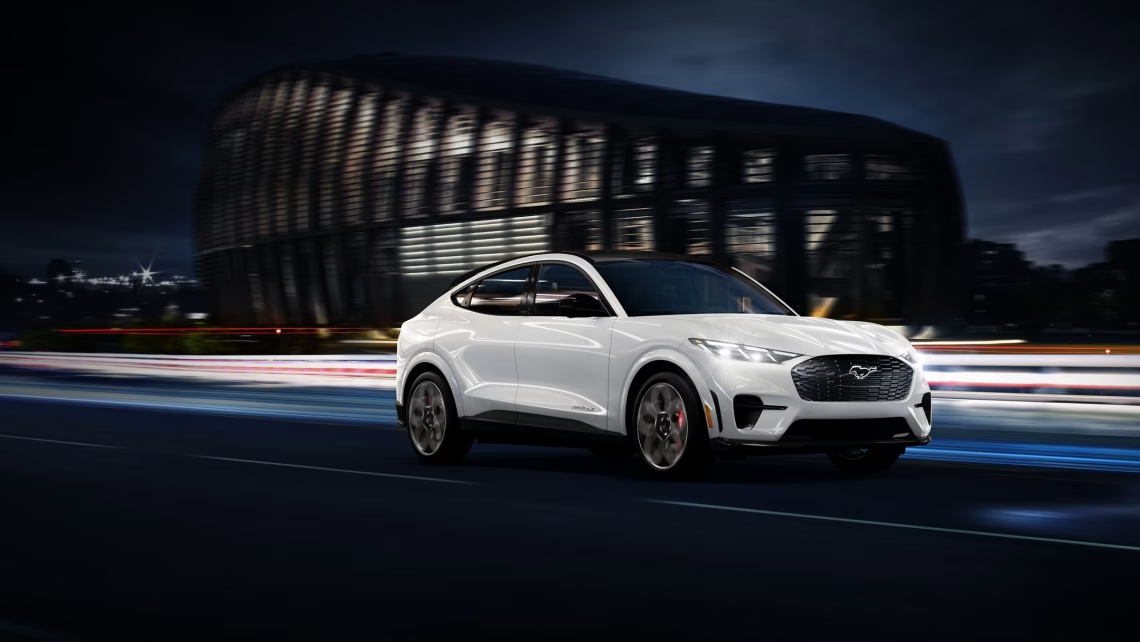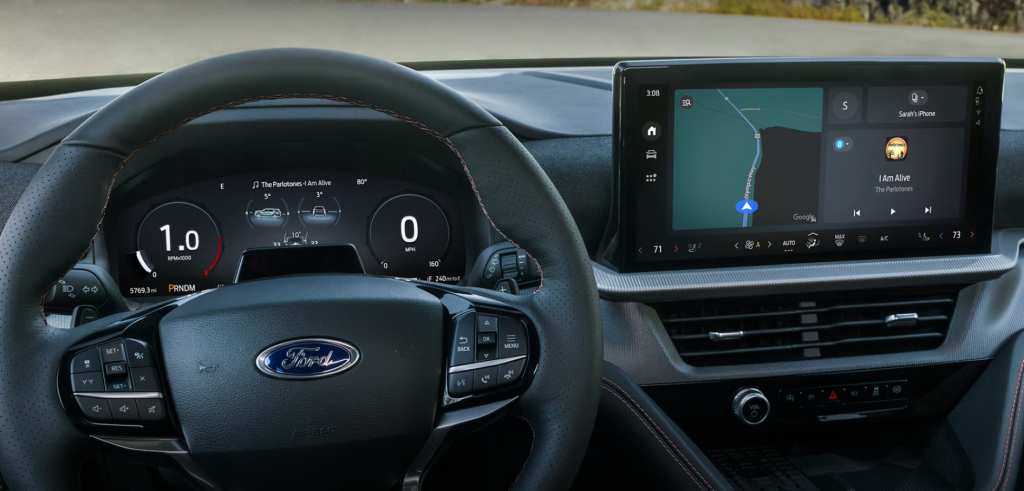
The SYNC 4A Dilemma: Why Ford Must Act Now to Save the Mustang Mach-E’s Future
Ford Mustang Mach E: A Call for Professional Resolve, Retrofit Solutions, and Long-Term Strategy Before Customer Trust Vanishes
Ford’s Mustang Mach-E launched as a thunderclap—a statement of intent in a world dominated by Tesla. It was the Blue Oval’s bold digital frontier, aimed at those brave enough to trust Ford’s electric vision. But now, those very pioneers stand stranded. As Ford pivots to the Android Automotive ecosystem, early adopters are being marooned on a decaying platform—SYNC 4A. What was once pitched as “future-ready” now risks becoming a cautionary tale, dragging resale values into a freefall, fracturing customer loyalty, and casting a long shadow over Ford’s software credibility. For owners of the 2024 and 2025 Mustang Mach-E models, the future is especially bleak—they will be the only Ford EV owners left behind, unable to upgrade to the new Ford Digital Experience. Outrage is already brewing and will only intensify as awareness spreads.
The Technical Gap: SYNC 4A vs. Android Automotive
In 2024, Ford began installing Android Automotive in all future EVs—Explorer EV, Lincoln Star, and beyond—unlocking Google-native navigation, voice assistance, YouTube, and a true in-car app marketplace. But SYNC 4A-equipped Mustang Mach-Es, more than 250,000 of them across North America, are stuck in a digital cul-de-sac.
- Google Maps and Assistant in Android Automotive
- Ford’s Digital Experience announcement
- Snapdragon 820A product brief
- Qualcomm Snapdragon 8155 platform
- CarEdge Mach-E Depreciation
Without a software bridge or hardware retrofit, SYNC 4A owners are denied:
- Google-native apps and ecosystem support
- Seamless cross-vehicle experience
- Long-term OTA feature parity
- Competitive resale protection

Deeper Hardware Divide: The Snapdragon Factor
SYNC 4A’s core runs on the Snapdragon 820A, a 14nm chip from 2016—ancient by today’s standards. It supports up to 4GB of RAM and lacks modern neural processing units or graphics pipelines for fluid UX. In contrast, China’s Android Automotive Mustang Mach-Es use the Snapdragon 8155, built on a 7nm process with 8-core CPU architecture, powerful Adreno GPU, and support for 12GB RAM. It’s like comparing a flip phone to a flagship smartphone. There is simply no comparison.
Consequences of Inaction
1. Resale Collapse: According to CarEdge and Edmunds data, Mustang Mach-E depreciation has accelerated to over 30% in just 24 months for base trims. Vehicles like the 2024 Mach-E SR AWD are expected to lose thousands more in value when buyers realize they cannot be updated to Android Automotive. This digital orphan status leaves them functionally obsolete by 2026.
2. Lost Revenue:
- Retrofit Revenue: 30% adoption at $1,500 = $112.5M over 5 years
- In-Car App Sales: App-based subscriptions and purchases = $11.25M estimated
- Total Opportunity Cost: $123.75M flushed if nothing is done
3. Customer Backlash: Online forums, Reddit, and owner groups are ablaze with discontent. Early adopters feel blindsided. “Future-ready” now feels like “future-forsaken.” Ford’s brand is at risk of becoming a punchline in the EV community.
4. Legal Risk: Legal analysts are already drawing parallels to class-action lawsuits like the MyFord Touch debacle. If Ford fails to disclose software obsolescence or offer a reasonable upgrade path, it could face investigations into deceptive business practices and lawsuits for misrepresentation.

A Retrofit is Technically and Financially Feasible
Ford already builds Mustang Mach-Es with Snapdragon 8155 in China. The retrofit path is within reach:
- Replace infotainment head unit
- Adapt harness or module interface
- Load Android Automotive with OTA provisioning
Estimated Cost per Retrofit: $1,000–1,200 (parts + labor)
Potential Profit at $1,500 Retail: ~$300–500 per unit
Revenue from 30% Uptake (250K units): $112.5M minimum
Retrofit isn’t just repair—it’s a lifeline, allowing Ford to introduce Google Play-based subscriptions, streaming services, and OTA enhancements. In a software-defined vehicle age, this is the only gateway to long-term relevance.
Monetizing Potential After Retrofitting: Unlocking New Revenue Streams
- App Store Revenue: Similar to Tesla’s in-car app ecosystem, Ford can generate income from app sales, premium navigation packages, music and video streaming subscriptions, and gaming apps. Conservative estimates suggest millions annually from just a fraction of Mustang Mach-E owners adopting paid apps and services.
- Subscription Models: Ford can roll out subscription services for advanced driver-assistance features (ADAS), enhanced voice controls, cloud connectivity, and vehicle health monitoring, providing recurring revenue beyond the initial vehicle sale.
- Over-the-Air (OTA) Upgrades: Charging for feature unlocks or performance enhancements via OTA updates can monetize software improvements post-sale, increasing customer lifetime value.
- Advertising and Partnerships: With a modern infotainment platform, Ford can integrate sponsored content or partner with brands for location-based offers and promotions directly accessible through the vehicle’s interface.
- Data Monetization: Secure and anonymized vehicle data can offer insights to third parties (with user consent), creating a new revenue stream while respecting privacy standards.
- With approximately 250,000 Mustang Mach-E units eligible for retrofit, even a modest 30% adoption rate of paid services could yield $10–15 million annually in software and app revenue alone.
- Adding subscription tiers and OTA feature sales could increase this figure to $25 million or more per year, scaling as the user base grows and more services are introduced.
Why Ford Must Act Professionally and Decisively
Ford wants to become a software-first automaker, yet this SYNC 4A crisis reveals a contradiction. Professionalism demands action. Loyalty from 2024–2025 Mustang Mach-E buyers hangs in the balance. These customers bought into Ford’s vision, and now they’re being punished for believing in it.
If Ford fails to act:
- Mustang Mach-E resale values will nosedive further
- Investors will question Ford’s digital competency
- Owners will shift to Tesla, Hyundai, and GM
- Brand loyalty will dissolve into resentment
- Lawsuits and regulatory scrutiny may follow
If Ford acts now:
- It preserves $100M+ in potential revenue
- It restores trust among loyal buyers
- It lays a true foundation for digital EV leadership
- It avoids legal liabilities and reputational damage
Conclusion: The Window to Fix This Is Closing
This isn’t just a product issue—it’s a symbolic iceberg threatening Ford’s digital credibility. The SYNC 4A conundrum is Ford’s digital “Titanic moment”—plainly visible, rapidly approaching, and perilously close. The Mustang Mach-E, once a beacon of innovation, now risks becoming a relic before its time.
The elephant isn’t just in the garage—it’s raging in the showroom, boardroom, and online forums. If Ford fails to retrofit or bridge the Mustang Mach-E to the Digital Experience ecosystem, it forfeits not just revenue but the trust of its most passionate supporters. The silence is deafening, the stakes monumental, and time is running out.
Sources & References

